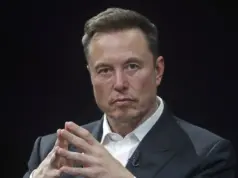Google has hired the first CEO for its self driving car project – John Krafcik, who has earlier worked with Ford and led Hyundai’s operations in the US before joining Google. The search engine giant made the announcement on Sunday night.
Krafick is currently the CEO of online price comparison website TrueCar Inc. Though it is his earlier experience when he was at the helm of Hyundai’s US operations for over 5 years and the 14 years in product development at Ford, which Google will try to capitalize on.
“This is a great opportunity to help Google develop the enormous potential of self-driving cars,” Krafcik said in a statement. “This technology can save thousands of lives, give millions of people greater mobility and free us from a lot of the things we find frustrating about driving today.
I can’t wait to get started.”
The Mountain View giant is currently testing its autonomous driving cars on the streets of California. The self-driving cars project, which is an initiative from Google X division, will still have its technical director as Chris Urmson with Krafcik to don the role of the new CEO.
Krafcik’s appointment as the new CEO also suggests that the company feels its driverless cars project has the potential to become an independent entity within the new corporate structure which makes it a part of Alphabet.
To recall, Google earlier picked the city of Austin, Texas to be the next testing ground for its self-driving Lexus SUVs, as the company has already been doing intense testing around the streets of Mountain View, California. Since Google announced this initiative back in 2010, its self-driving cars have reportedly driven over 10,000 miles, which according to Google, is equivalent of 75 years of driving adult driving experience.
Google believes these driver-less cars could be ready for roads by the end of the decade, though the company suggests these cars may be made available as an on-demand service as opposed to a standalone product that consumers would buy.










